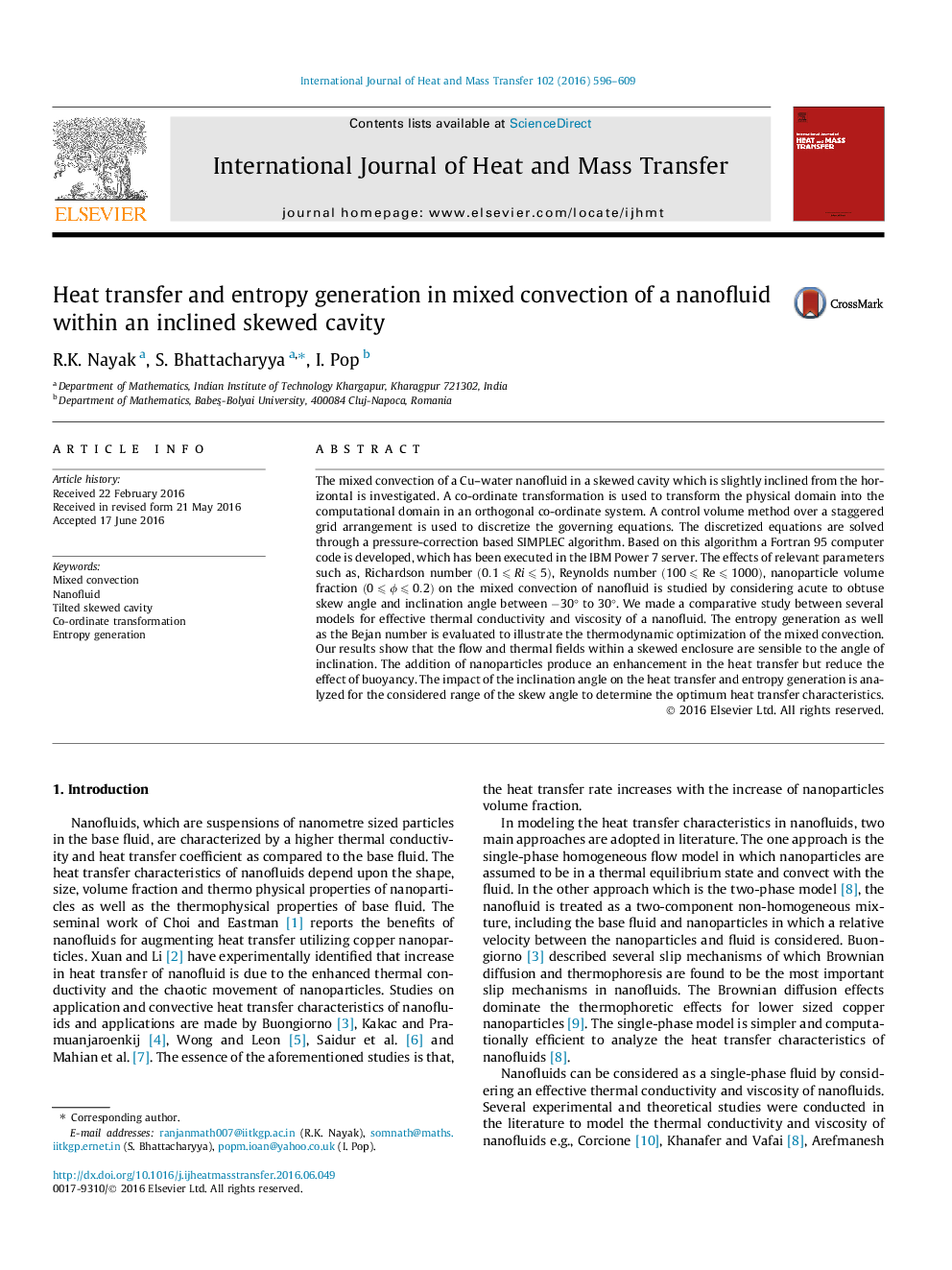| Article ID | Journal | Published Year | Pages | File Type |
|---|---|---|---|---|
| 7055173 | International Journal of Heat and Mass Transfer | 2016 | 14 Pages |
Abstract
The mixed convection of a Cu-water nanofluid in a skewed cavity which is slightly inclined from the horizontal is investigated. A co-ordinate transformation is used to transform the physical domain into the computational domain in an orthogonal co-ordinate system. A control volume method over a staggered grid arrangement is used to discretize the governing equations. The discretized equations are solved through a pressure-correction based SIMPLEC algorithm. Based on this algorithm a Fortran 95 computer code is developed, which has been executed in the IBM Power 7 server. The effects of relevant parameters such as, Richardson number (0.1⩽Ri⩽5), Reynolds number (100⩽Re⩽1000), nanoparticle volume fraction (0⩽Ï⩽0.2) on the mixed convection of nanofluid is studied by considering acute to obtuse skew angle and inclination angle between â30° to 30°. We made a comparative study between several models for effective thermal conductivity and viscosity of a nanofluid. The entropy generation as well as the Bejan number is evaluated to illustrate the thermodynamic optimization of the mixed convection. Our results show that the flow and thermal fields within a skewed enclosure are sensible to the angle of inclination. The addition of nanoparticles produce an enhancement in the heat transfer but reduce the effect of buoyancy. The impact of the inclination angle on the heat transfer and entropy generation is analyzed for the considered range of the skew angle to determine the optimum heat transfer characteristics.
Related Topics
Physical Sciences and Engineering
Chemical Engineering
Fluid Flow and Transfer Processes
Authors
R.K. Nayak, S. Bhattacharyya, I. Pop,
